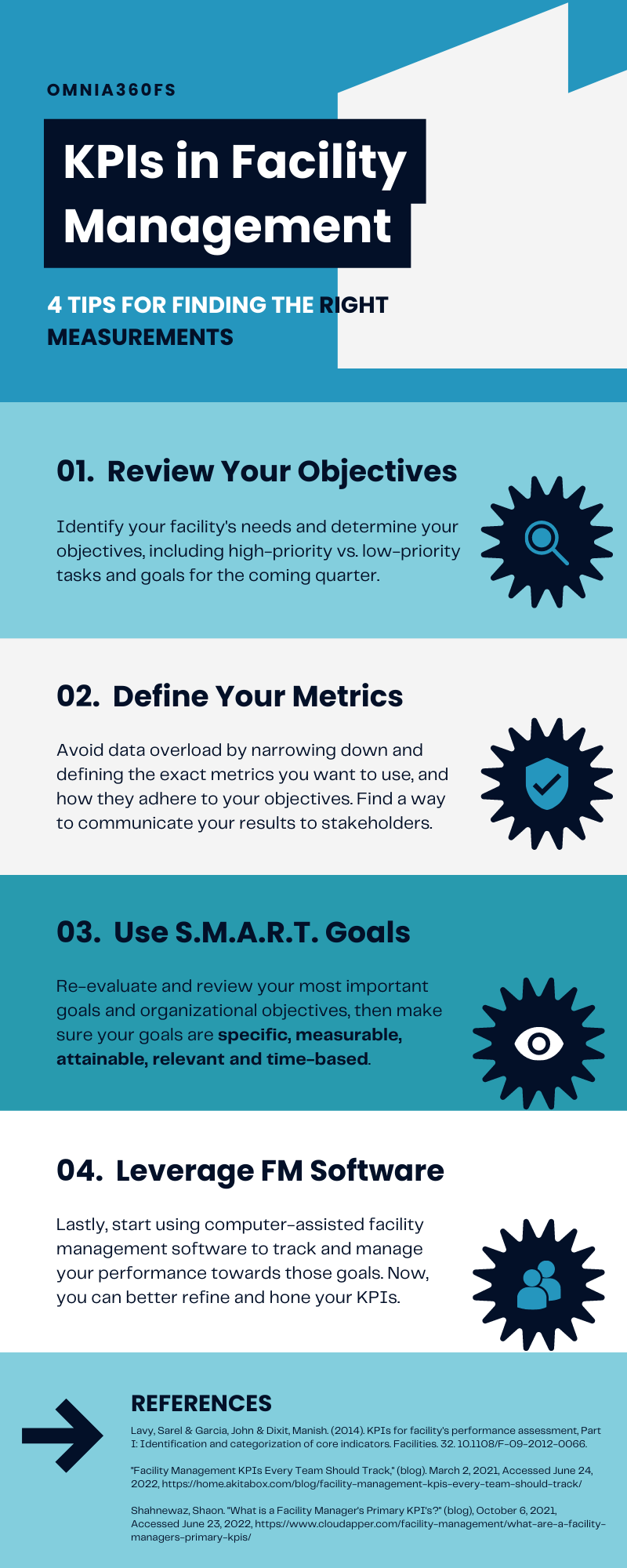What is CAFM Software? (Computer Aided Facility Management)
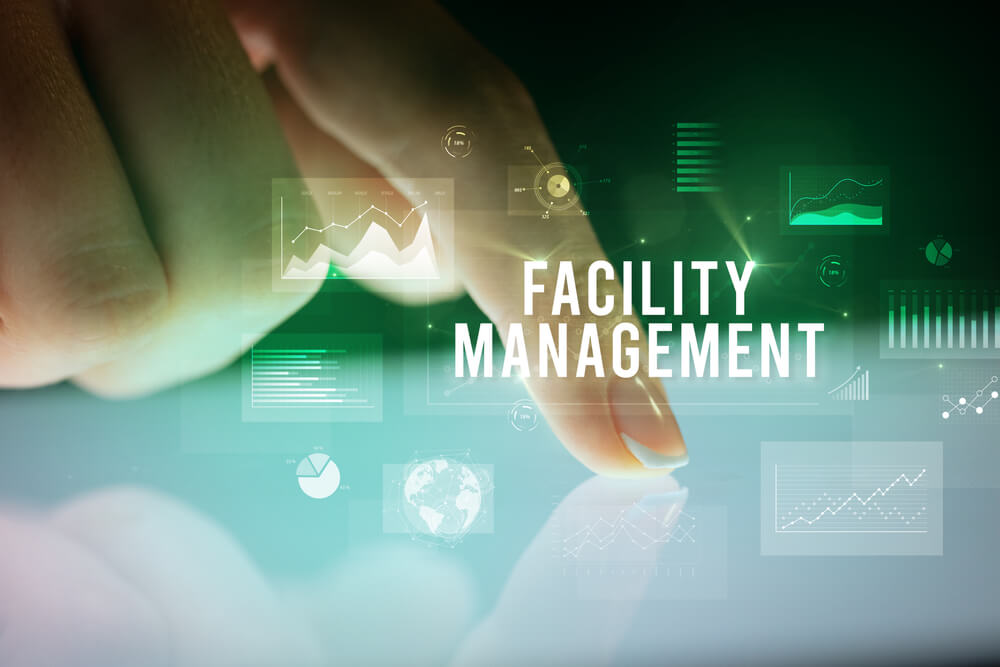
Computer Aided Facility Management (CAFM) gives facility managers and FM companies the tools to streamline and automate their internal processes, tracking, managing, reporting, and planning all facets of a facility’s operations.
Here are a few of the core areas that facility managers can analyze and control with a CAFM:
- Asset management
- Reactive and planned preventative maintenance
- Operational facility services
- Roomer reservations
- Space and workplace management/coordination
At Omnia360fs in Cincinnati, Ohio, we offer comprehensive facility maintenance services using the latest technologies and softwares in the facility management industry — including a CAFM. It helps to streamline data collected from a variety of sources and allow FM managers to take accurate, results-driven action from it.
CAFM softwares are also web-based and can store a variety of data collected from various technology integrations:
- Building information models (BIM)
- Computerized maintenance management system (CMMS)
- CAD systems
- Object-oriented database systems
Leveraging a CAFM is the best way to go about creating reports, analyzing data, and organizing internal work orders while sharing your results across various platforms and devices.
Reasons to Use a CAFM
- Supports strategic operational management
- Helps FM managers ensure organizational assets are being utilized at the lowest possible cost for all phases of a building’s lifecycle.
Benefits of a CAFM Software
- Improve communication
- Automate routine internal processes and work orders
- Improve FM time management
- Reduce space, maintenance, or operational costs
- Manage assets and equipment
Challenges Faced by Facility Managers
FM is more challenging than ever:
- Shrinking maintenance budgets
- Resource constraints
- Political priorities
- Unfunded mandates
- Distributed data and data disparities
- Organizational stovepipes
To work against these obstacles, you’ll need good CAFM software.
But how do you choose the right fit?
Best CAFM Softwares on the Market Today
Choosing the right CAFM solutions software will depend on several factors, including your FM company’s goals and your stakeholders’ goals included.
Here are some notable mentions:
Related Post: Top 5 facility management solutions software for 2022.
Why CAFM Is NOT CMMS
A computerized maintenance management system (CMMS) focuses on organizing and ordering maintenance requests, pending projects, and updates for specific assets in a building.
For example, ensuring that a commercial property’s HVAC unit has been “inspected, maintained, and repaired” falls under the domain of a CMMS.
CAFM software pertains to this but encompasses more avenues that give detailed information about a facility as a whole: information about the staff, building sections, and equipment connections.
CAFM vs. IWMS
Integrated workplace management system (IWMS) operates much like a CAFM. The core difference is that CAFM softwares allows seamless integration between tech platforms and devices, giving a unified experience during workflows.
CAFM vs. EAM
Enterprise asset management software, EAM software, is similar to CAFM but focuses and specializes in asset management capabilities. CAFM, however, offers more solutions for energy monitoring and space management.
Features & Tools of a CAFM
The features and tools available in a CAFM will depend upon the software. However, most of the software is quite advanced, offering advanced automated FM functionalities and links between external analysis packages.
Interactive Graphics
Interactive graphics integrate with mobile tools and allow for the drafting and modifying of facility layouts and other visual documents. They can be accessed and shared on multiple platforms, saving the FM team time and money.
Data Management Tools
Tools allow you to organize, reuse and reorganize existing data to better convert it into useful, actionable information.
Interactive Database
Data is at the heart of any facility management practice, hence why it’s important to get full access and usability from data. It allows for a fully-interactive database of data that can be reformatted and exported into visualized reports.
What Can a CAFM System Do for Your Operation?
Inventory management:
Routine repairs, preventative maintenance, and emergency repairs can be clearly defined and classified per equipment or asset category.
Strategic planning:
More data-driven insights from all angles allow FM teams to strategize and coordinate their building management efforts in a way that maximizes profitability, performance, and cost savings.
Operations:
Get extensive information on your operations by analyzing your spending, benchmarking data, creating historical overviews, and identifying trends.
Building assessments:
Risk assessments, security vulnerability, and conditions reporting are made possible to share and distribute across platforms for various stakeholders.
Energy performance analysis:
The software allows you to get a 360-degree view of your building’s assets and their functionality, including their energy performance, granting key insights to FM teams on how to optimize energy efficiency.
Vendor management:
The software allows you to add vendors to your system, making it easy to coordinate, organize and delegate work orders and process updates for various vendors.
CAD drawings:
Computer-aided design drawings (2D or 3D illustrations) allow you to see how the space is laid out, including a room’s safety features, assets, or equipment; they can be used as quick reference points by an FM team.
Capital project management:
It gives managers the ability to deal with budgetary constraints and construction needs by storing information about the building’s assets, infrastructure, and equipment used to make data-driven decisions.
Get Integrated Facility Management with Omnia360
Hire an experienced facility management company to take care of your building’s needs. We work with you and your team to ensure an energy-efficient and productive commercial building. Call us at (833) 350-6642 for a free assessment today.
4 Risks to Assisted Living Facilities Without Facility Management Services
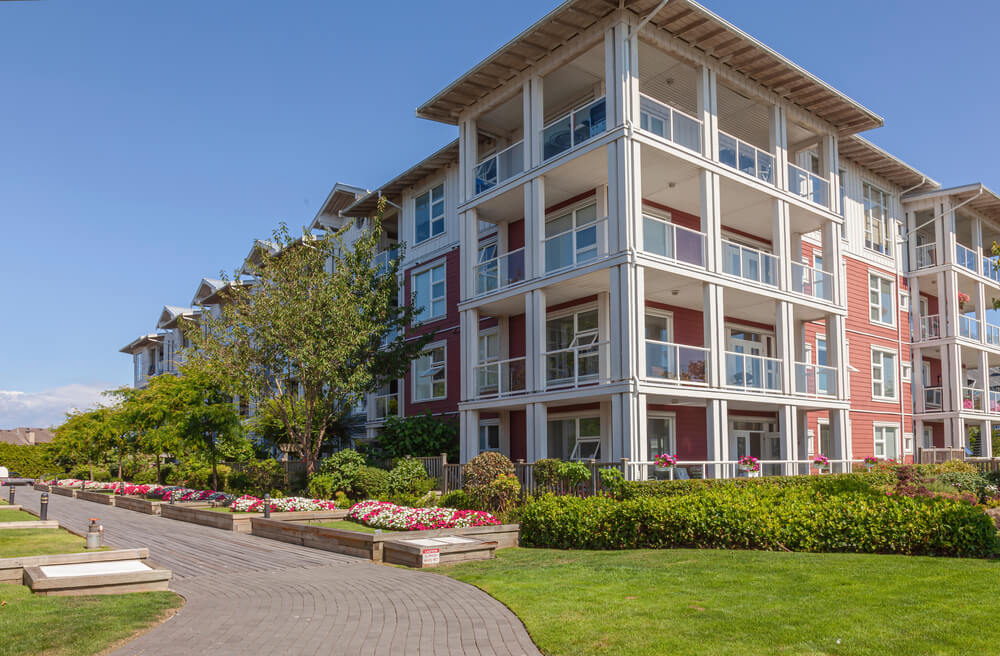
Increasing costs are becoming a major factor for businesses across the country to contend with, and the search for money-saving opportunities is becoming more important. This is especially true for assisted living facilities and retirement care centers. Many of them are struggling with challenges in the industry:
- Increasing resident numbers
- Higher costs for operating profitably
- More complex care structures
Faced with that, finding solutions is difficult. The search to bypass higher costs might lead to assisted living facilities no longer paying money to third parties for various services — for instance, facility management services.
In today’s post, Omnia360 Facility Solutions discusses the four primary risks associated with retirement homes neglecting facility management and building upkeep.
1. Risks to Health and Safety
Assisted living facilities focus heavily on patient care, safety, and quality of life. Saving money by foregoing contracting with a facility management company can be detrimental to a facility’s core values and cause.
FM companies like Omnia360 ensure the building’s specs are up to date and compliant with state regulations, bolstering the health and safety of residents and employees alike. Services range from janitorial cleaning to skilled trade maintenance on every part of a building’s infrastructure.
If the duct system is compromised, it’s not just your energy bill that you’ll have to worry about. Senior residents might be unable to get cool or warm air to their rooms, or they might experience worsening breathing problems. Conditions like these put pressure on your labor force, and resources (oxygen tanks, pain management supplies, etc.).
Even something as small as a window seal leak, if left unchecked by a professional, allows moisture to creep in and mold to develop. That spells bad news for a resident’s lungs if their bed is near the window.
Plus, you don’t want residents sweating and immobilized by the debilitating heat and humidity. Hiring an FM company to troubleshoot and maintain your building’s commercial HVAC system is critical.
2. Working Conditions and Employee Turnover
FM services take the pressure off of employees who may be asked to do more work related to facility management as a means of saving costs.
Instead of contracting out “soft” facility management services, like trash pickup and window cleaning, assisted living managers may choose to overload their current staff with janitorial and cleaning duties on top of their caregiving responsibilities. It can lead to burnout, productivity loss, lower-value patient care services, and (most of all) turnover.
The turnover rate for nursing and assisted living facilities staff is high. According to experts at Senior Housing News, it rose to 53.11% in 2020. Turnover eats into a facility’s expense budget. FM services help to ensure an easier, healthier, and more amicable working environment that helps deter turnover (and its associated costs).
Obviously, a major factor in turnover is an employee’s working conditions. Is the workplace a clean, breathable, well-lit, and temperate location? Neglecting HVAC or electrical issues can make for the opposite.
Comprehensive FM services give employees safer and more comfortable working conditions by ensuring that services like plumbing, electricity, and janitorial tasks are all completed with accuracy, timeliness and professionalism.
3. Energy Loss, Inefficiency, and Operational Costs
FM service managers work with you to strategically assess your facility and find out what services can benefit it in the long-run, in terms of functionality, energy efficiency, and profitability.
Assisted living facilities could be losing money on their utility bills alone and not know it. Having a regularly-scheduled maintenance crew with an FM company could mean identifying your building’s structural issues early and fixing them, leading to some major cost savings.
In an effort to save on expenses, “hard” FM services, like HVAC or electrical maintenance might get ignored or put on the back burner. Later on, however, a building can wind up with an unexpected issue requiring emergency repair services (often more costly than preventative).
4. Negative Resident Experience
Customer experience matters. Besides, people talk. And in the internet age, where online consumer reviews and social media shares rule and reign, it’s important to give customers a great experience from start to finish.
Facility management services can provide assisted living facilities with exterior grounds maintenance that improves the building’s curbside appeal and gives visiting families a great sense of what the place has to offer.
Skilled technicians are also available 24/7 to alleviate any emergency outages or malfunctioning equipment on site. It’s an added benefit that takes the stress off of residents and employees, uplifting their experience and simultaneously giving your building a more beautiful and functional atmosphere.
The better experience residents have, and the more satisfied their families are with the quality of care and the building’s upkeep, the better your reviews are. It’s just good for business.
Get 360 Degrees of Facility Maintenance and Upkeep Now
Our facility management service contracts ensure that your entire building stays in optimal condition and has great performance. Contact us today for more information about our service packages and a free assessment at 833.360.6642.
3 Benefits of Exterior Building Maintenance
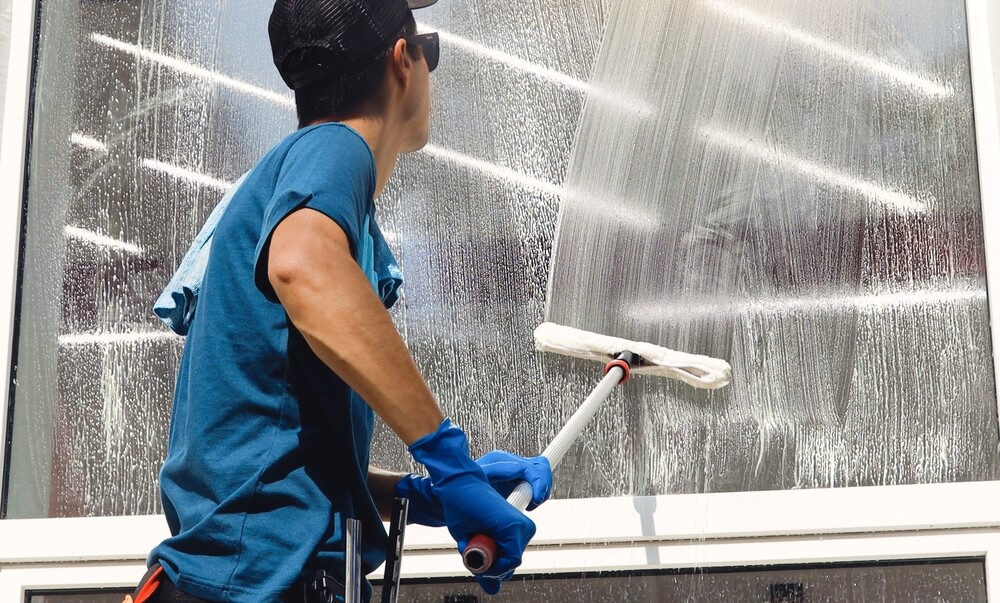
Hiring external maintenance services for your commercial property is an important investment that yields several key benefits: increased customer and employee satisfaction and an improved brand image.
Our facility management team at Omnia360, located in Cincinnati, Ohio, adheres to the highest standards in the industry, creating and following through on an exterior facility maintenance plan that incorporates your building’s unique needs and budgetary limitations.
1. Makes the Facility Safer
A well-maintained building makes it that much safer for employees and customers. No matter the year, the season, or location, your facility can benefit from professional landscape maintenance, whether it’s snow or ice removal or general parking lot upkeep.
A clean and clear external grounds area makes it more likely that you’ll avoid any potential lawsuits at your commercial property — it’s a no-brainer. Hiring an FM company that can ensure your property is well maintained and offers unobstructed walking paths for clients is critical.
2. Better for Foot Traffic and Visitors
Proper exterior design can make it easier for pedestrians to navigate to and from your premises, and it helps customers who may have visual impairments navigate your business’s location.
And, when it comes to your business’s success, the more foot traffic you can get on your property, the better. Having a modern, sleek, clean, and safe building is part of what draws customers back to your property over and over again.
3. Creates Commercial Appeal to Customers
Floral landscaping, lawn care, and power washing all play a core role in updating the visual appeal of your building. Your commercial building works as effectively “free advertising” for your company and your brand.
Curbside appeal is vital. It’s associated with your business’s perceived value.
Most Common Exterior Maintenance Services
Building Leaks.
Caulking and sealing services help to preserve the infrastructure of your building and prevent costly water damage from affecting your property.
Clean Masonry.
Pressure washing older parts of your building and adjacent areas (sidewalks, parking lot, etc.) to eliminate mold, gum, oil, and various contaminants that can shorten your facility’s usability.
Landscaping.
Clean, walkable sidewalks, accessible side railings, automatic door openers, and a well-trimmed lawn provide a better customer experience and benefit the company’s overall professional image.
Window Cleaning.
Showcasing newly cleaned, modern glass windows on the front of your building is a major part of curb appeal and creates a lasting impression on your potential customers.
Pest Protection.
Installing rodent trapping protections or pest deterrents around your facility is a great investment for long-term cost savings. Taking advantage of preventative pest control for your facility’s grounds is well worth it.
Get Building Maintenance From Omnia360 Facility Management
When it comes to managing your facility, we cover it all, inside and out. Our cross-trained team of technicians works with your in-house team to enhance your facility leading to decreased operational costs and increased customer safety.
Contact us today to get a free assessment at 833.360.6642.
Project Management vs Facility Management: Why You Need Both

Facilities management is a broad discipline that encompasses a wide range of services, including project management, for an even wider variety of industry verticals, from manufacturing sites to corporate offices, e-commerce stores, and more.
Should you hire a project manager and a facilities manager, or team up with an FM company that offers both?
In today’s post, Omnia360fs, an integrated facility management company in Cincinnati, Ohio, explains why you should integrate project management as part of your facility management service package.
What’s Facility Maintenance?
Facility management involves the routine, strategic maintenance, and upkeep of a building to ensure it meets various standards: regulatory compliance, safety, energy efficiency, and functionality.
Core Benefits:
- Increased productivity
- Improved internal processes
- Improved labor efficiency
- A better-organized plan of operations
What’s Project Management?
According to the Project Management Institute, project management is defined as “the use of specific knowledge, skills, tools, and techniques to deliver something of value to people.”
Core Benefits:
- Clearer cost analysis
- Improved energy performance
- Asset tracking and upkeep
- Space or workstation optimization
What’s the difference between facilities management and project management?
Although the roles can overlap a bit, they’re fairly distinct. PM focuses on managing a project from beginning to end, whereas FM focuses on continuously managing and providing resources to ensure a building’s upkeep.
Key differences:
- PM is temporary, with a clear timeline from start to finish, but FM is ongoing and broader in its scope of activities and objectives.
- PM’s main objective is to finish a project on time and under budget; FM is there to support a pre-existing facility.
- PMs have more responsibilities; FM has fewer.
- PM has various methodologies; FM has inspection, maintenance, and space management.
3 Ways Integrating PM with FM Benefits Your Business
When you let your facility management company manage your projects, you’re hitting two birds with one stone and getting access to new insights and cost-saving potentials that just weren’t possible before.
1. Reallocating Your Budget.
It’s easy to find the best ways to flex your project’s dollars and maximize the effectiveness of your overall budget when a facility management team is overseeing project management duties.
Creating cost-saving initiatives is far easier when a single party understands the ins and outs of your facility’s needs and your project requirements.
2. Find Cost-Saving Insights.
By having your project manager and facility manager serve identical functions, cross-collaboration and new insights are available that would have otherwise fallen through the cracks, due to how siloed these two functions can be.
Where is money falling through the cracks on your project? Is it asset procurement, labor productivity, or some other factor that’s the cause?
Getting a two-pronged, strategic business approach to FM and PM gives you the exact insights you need to identify losses and correct them immediately.
Besides, if you’re running back and forth between your project manager and facility manager, there could be a game of telephone being had: missed information and missed opportunities. Hiring an FM company to oversee project management duties eliminates that risk.
What’s more, is that the understanding, budgeting, and optimization of a project’s workflow and internal processes can open the door to finding new opportunities for your facility to find cost-saving initiatives and improvements within certain areas.
3. Fully Integrated Systems Analysis
With FM and PM under one service provider, you’ll be able to get a bird’s eye view, along with a micro view, of your organization’s performance and how it ties into your project goals.
Leveraging the benefits of FM and PM software allows for accurate tracking and measurement of important metrics for your project’s KPIs. It can also streamline and integrate your overarching site management strategy, as it relates to your current project’s development.
When is Project Management the Right Fit?
Is your company in transition or understaffed? Is it a short-term project (within a few months)? Are you experiencing frequent or semi-frequent bottlenecks, struggling to delegate tasks, or collaborate with various stakeholders and interest groups?
If the answer is yes, a data-driven, collaborative PM/FM solution is perfect for you. If you’re unsure, our free assessment helps to identify whether or not project management services are necessary or if your budget is better spent elsewhere.
Omnia’s Project Management Services: What’s Included?
If your first thought is how great it would be to integrate project management services into your facility maintenance service contract, we’ll give you a good idea of what responsibilities are included as part of our PM services on small to medium-sized projects.
Cost Management.
Your budget matters. That’s why our PM services cover the entire gamut of cost management, from planning, budgeting, estimating, and control to cost applications like earned value analysis (EVA) — a way to measure the work performed on a project.
Project Risk Management.
Understanding risk and managing it is a major component of high-value project management services. Our project managers work to evaluate and categorize risk based on several variables specific to your project.
The types of risk management we account for include:
- Cost: The risk measurement of factors that could be a detriment to the budget, including cost estimation errors.
- Schedule: The risk of unaccounted-for scheduling conflicts that lead to delay, including scope creep, a common cause of timeline setbacks.
- Performance: The risk that certain events could impact performance or labor productivity is something that must be accurately measured and noted.
Forecasting Project Data.
We leverage the latest PM technologies to create predictive models of what — if any — bottlenecks, breakdowns, or potential drawbacks could occur during the course of a project. At Omnia360, we’re able to predict future performance based on streamlined data collection methods. Planning ahead means accessing more cost-saving opportunities.
Accurate Close Out Packages.
At the final stages of a project’s life cycle, our team is able to collect documentation deliverables and assemble them into a package that showcases the trajectory of the project. We believe in transparency, and providing insights into the data behind each decision before, during, and after a project’s completion.
Contact Omnia360 for Project Management Help Today
If you’re looking for help with your next small to medium-sized project, hiring an experienced facility management company is highly recommended.
Contact us for a free assessment of your building and/or your next organizational project.
Top 6 KPIs in Facility Management
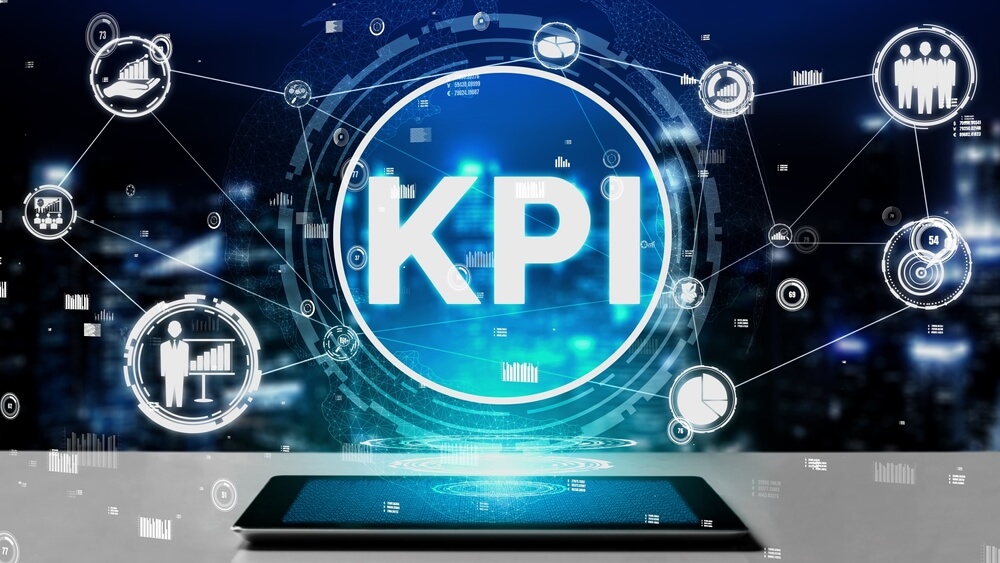
In the world of facilities management, the best ways to measure performance are up to debate. However, there are some go-to key performance indicators (KPIs) that every facility manager should track to ensure progress is optimal.
Omnia360, a comprehensive facility management company in Cincinnati, Ohio explains the six best KPIs to consider in 2022.
Why are KPIs Important for Facility Managers?
KPIs let you and your team know how to best manage a facility, track progress and make adjustments along the way. They inform smart, strategic business decisions across an organization.
What’s the Difference between a KPI and a Metric?
A key performance indicator is a measurement that gives insight into an area of your organization’s performance, whereas a metric is a numerical unit of measurement that informs the KPI. All KPIs are metrics. Not all metrics are KPIs.
How Should KPIs Be Established?
Remember to use the S.M.A.R.T. method:
Specific,
Measurable,
Attainable,
Relevant,
Time-Bound.
Best Data Sources for Measuring KPIs
- FM Information System
- Finance System
- Staff
- Internal Surveys
- Utility Companies
- Service Companies
- Vendors
- Building Automation System
- Energy Management System
- Other Internal Systems
6 KPIs That You Can Start Measuring Today
1. Reactive Maintenance vs. Preventative Maintenance
If you’re constantly putting out fires and spinning your wheels with emergency maintenance repairs, you’re behind the ball on profitability and productivity. Your ratio should be 80:20 in favor of preventative, planned maintenance. This way, you’re on top of your facility’s management goals.
2. Work Order Completion Times
What’s the turnaround time for a work order to get completed? If you notice a tech taking a bit longer than expected, perhaps it’s a good time for some extra training.
3. Workforce Productivity
Overall productivity informs how well your facility is being managed. Low productivity could be due to low morale, uncomfortable or unorganized working conditions, or internal processes.
These are something to watch out for and consider hiring a third-party consultant like Omnia to streamline your operation’s model.
4. Employee Satisfaction Surveys
Dissatisfied employees usually lead to higher turnover rates, which costs the company time and money to staff, onboard, and train new hires, as well as cross-training or adjusting work roles to pick up the slack and maintain profitability.
In other words, you can’t afford to ignore this KPI. To properly gauge employee satisfaction, communicate with staff members personally or send out anonymous surveys to be filled out and look at the numbers.
5. Backlog of Deferred Work
Deferring maintenance can be a cost-effective, strategic decision by FM managers. However, it’s a double-edged sword and it can backfire. One of the drawbacks is a laundry list of backlogged work orders.
These are costly to your productivity and efficiency as a company. It’s also a great KPI to look out for. Managers can measure backlogs in hours and convert the data to backlog weeks. Your goal should be a backlog of four to six weeks.
6. Work Schedule Compliance
At the end of the day, your ability to schedule and complete work for customers is a core indicator of well-optimized facility management services. This KPI allows you to determine how technicians, tools, software, and hard or soft resources work together to deliver a great product to your customers.
Being able to promise your customers that work gets delivered on time, without hiccups, is part of long-term success in FM.
Contact Omnia360fs for Facility Management Services
We value high-quality, transparent, and collaborative work that emphasizes operational success. We use the latest technologies and data metrics to analyze and report your facility’s operational performance. Partner with us today by calling 833.360.6642.
Is Facility Management Going Virtual? (VR, AR and AI)

Facility management companies are going virtual, and for good reason. The adoption of technology across sectors like FM has changed how we work and streamlined various internal work processes. It’s in no small part thanks to the adoption of AI-driven technologies, alongside virtual reality and augmented reality.
In today’s blog, Omnia360 explains why facility management is going virtual and what the benefits are.
What Does “Virtual” Mean in this Case?
Going “virtual” involves the adoption of technologies that allow FM companies to perform work tasks and internal processes without being in the same location in person. VR and AR technologies fall under the umbrella of “going virtual.”
Let’s define some terms:
- Virtual reality (VR) is a computer-generated simulation of a 3D environment.
- Augmented reality (AR) enhances the physical world through sensory media technologies.
Both AR & VR are key components to how the FM industry is evolving.
So what’s driving the push for facility management companies to be virtual?
Rapid advances in AI technology, increased globalization, social invention, disruptive change, and market competition are drivers for why many facility management companies are “going virtual.”
Three Ways Virtual Technologies are Enhancing Facility Solutions
1. Monitor “Unseen” Equipment
Using augmented reality technologies in a facility is like having X-Ray vision. Those hard-to-reach pipes, wiring or tunnels hidden within a building are far easy to spot, monitor and assess. Without AR enhancements, you’d likely have to take out the drywall or perform some other intensive task to access these areas. The sensors that collect data that can be exported to an FM software for review. This helps FM teams complete more accurate repair and maintenance work.
2. Create Smart 3D Renderings of Facilities
VR technologies allow one to be fully immersed in a building’s layout, seeing every facet of a facility, and making it easier to comprehensively plan, build and maintain a facility. Normally, when this is done in person, it’s time intensive and involves plenty of trial and error. VR devices also allow for multiple users to view a scalable 3D rendering of a facility simultaneously, thereby making collaboration easier and presenting ideas to stakeholders more engaging (you can show, instead of tell).
3. Remote Troubleshooting
Using VR to create 3D models for remote, virtual inspections require fewer resources and help managers determine better, strategic solutions for facilities. Using VR to troubleshoot equipment problems, schedule accurate work orders and direct contractors remotely saves enormous sums of time and makes FM managers more competent at their role.
Going Virtual Means Greater Labor Efficiency
Virtual technologies are forcing companies in facility management and other sectors to adapt their business practices. The advent of remote work, for instance, or “work from anywhere” jobs lowers the overall cost of maintaining a brick and mortar facility; and, at the very least, reduces various costs like a building’s monthly energy bill usage and cleaning services.
There are plenty of benefits to telework and adopting a virtual work method:
- Improving team productivity
- Optimizing operations cost-efficiency
- Leveraging decentralized labor resources
Virtual Technologies Streamline FM Work Processes
Omnia360 is among the many companies to incorporate virtual solutions to bolster internal work processes and workload efficiency.
This is specifically the case when it comes to assessing facility operations, organizing a maintenance task pipeline, and collaborating with clients on project management workflows.
- Monitoring and Reporting: Technology allows for seamless updates on work order statuses, where an FM manager can be at work, receive an auto-generated work order that can be easily viewed by an on-site service technician.
- Data Collection and Analytics: The integration of cloud networking and mobile infrastructure allows for FM managers to collect data for operations, equipment and work orders with a mobile phone app, making for faster decisions and more control over maintenance plans.
- Streamlined Business Operations: Wifi-based mobile integration of the workplace allows for expedited work order processes, improved labor efficiency, and cost savings, where requested work orders can be sent directly to a technician through an app.
The instant connectivity over digital devices through apps allows for minuscule processes of information transfer between parties regarding work orders, repairs, and projects to be far quicker and easier than ever before.
Mobile Vendors and Improved Turnaround Time
With the help of virtual meetings and improved data connectivity on the Cloud, mobile vendors can better share information about a project or work order before, during, and after it’s completed.
With more information through data, there’s increased accuracy and streamlined efficiency in completing on-site repairs and maintenance checks.
Digital Workload Management (Integrating Asset Tracking)
AI technologies are becoming an integral part of running a facility management company. So much of the manual work of filing and organizing work orders, detailing project budgets and so much more is getting outsourced to a computer.
This means companies can be more agile and direct resources towards other productive pursuits.
Here are some of the benefits of having asset-tracking technologies and digitized resources:
- Easy management and transfer of work orders or project specs
- Tracking complaints or internal changes to update business goals
- Reporting and monitoring shifts in a business operations capacity
- Accurate data collection and analytics to support smart business decisions
Related Post: Top 5 Facility Management Solutions Software for 2022
Adopting Virtual Technologies is a Net Benefit to Any Company
This streamlined efficiency not only benefits FM companies, but clients as well.
Businesses that need their landscaping spruced up, commercial HVAC systems repaired, or broken plumbing fixed can expedite the process of getting repairs completed on time and under budget with integrated virtual technologies.
Virtual tech improves transparency and allows for building owners and property managers to make informed decisions with their operations budget.
At Omnia360, we pride ourselves on having well-organized internal processes and procedures, including thorough checks and balances on our repairs and maintenance work. Remote diagnostic technologies make inspecting, assessing and reporting on a building’s specific work projects far more streamlined and accessible to stakeholders.
Virtual mobile technologies enhance interdepartmental communication, giving faster data transfer between parties and faster decisions.
At Omnia360, we make sure that our on-site vendor management is done in a timely, accurate, and efficient manner, so you can focus on doing what you do best: running your company.
Hire a Cutting-Edge Facility Management Company Today
The team at Omnia360 utilizes the latest technologies and management practices in the industry. We have all of the tools to ensure your building stays well-maintained and cost-efficient throughout the whole year. Contact us today for a free assessment and more information about our service contracts.
